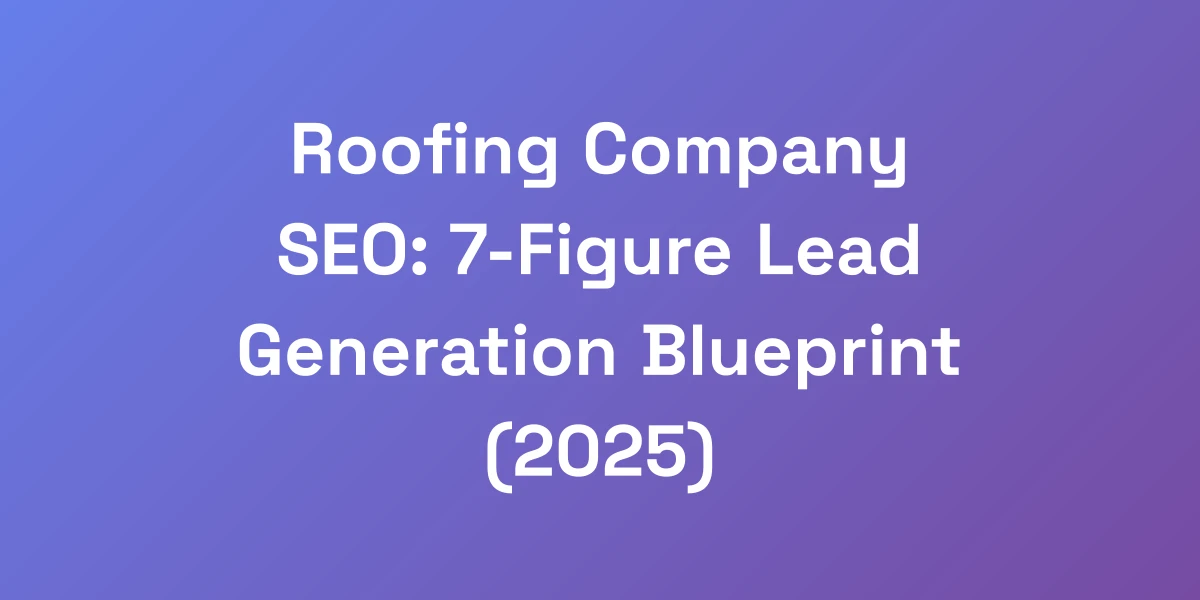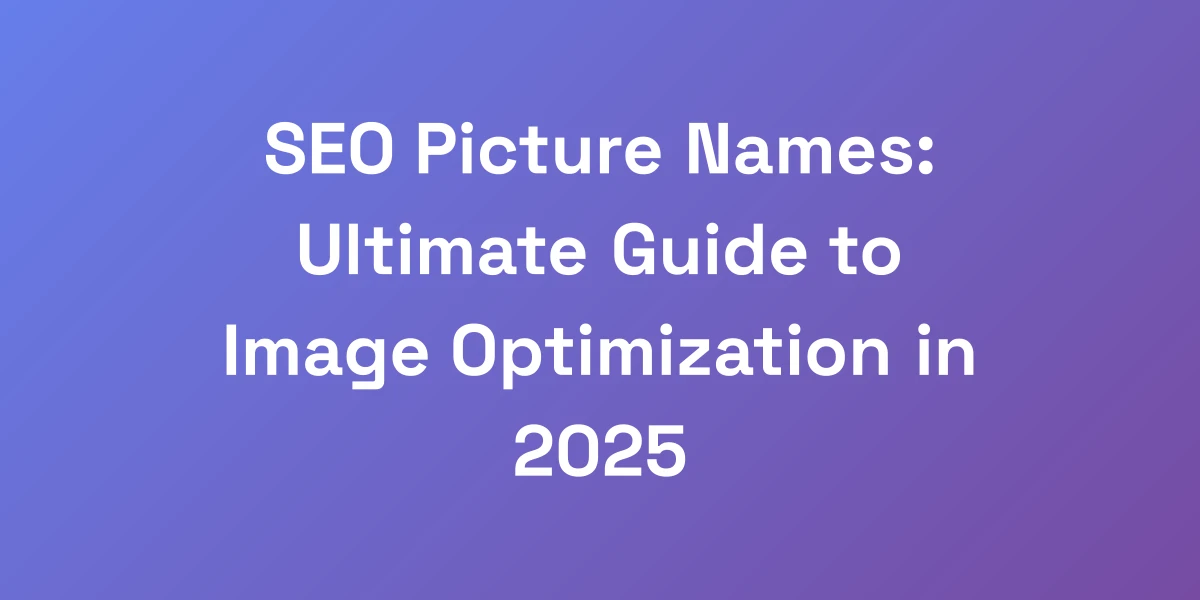
Lead Generation SEO: Ultimate Guide to Attract Quality Leads
Apr 23, 2025 | By [email protected]
Lead Generation SEO isn’t a hope-and-pray tactic. We’ve seen businesses pour dollars into ads, only to watch traffic evaporate without a trace of qualified conversations.
We’re here to change that.
Imagine a system where every blog post, landing page, and button is engineered to pull in prospects who already want what you sell.
Sounds like a dream? It’s exactly what lead generation SEO delivers when you ditch fluff and focus on substance.
In the next few thousand words, we’ll unpack the playbook that turns your website into a lead magnet.
Expect battle-tested examples, crystal-clear checklists, and real-world stats proving how this approach outperforms cold calling, display ads, and untargeted outreach.
We aren’t talking theory—we’re diving into tactics that move the needle and pack your calendar with discovery calls.
Ready for predictable, sustainable growth? Let’s get started.
Understanding SEO for Lead Generation: The Game-Changer
Most teams treat SEO like a popularity contest—chasing rankings instead of revenue. We flip that script.
Lead generation SEO focuses on aligning every page with prospects who are ready to pull the trigger.
What Sets Lead Generation SEO Apart?
Traditional SEO chases traffic volume. Lead generation SEO chases qualified conversations.
- Intent alignment: Content tailored to specific buying stages rather than broad topics.
- Conversion triggers: Calls to action built into the strategy from day one.
- Data-driven iteration: We measure leads with verified lead generation statistics, not just visits.
The Importance of Buyer Intent Keywords
Not all keywords are created equal.
Generic phrases like “marketing tips” might draw eyeballs, but they rarely close deals.
We zero in on mid- to bottom-funnel terms—“best SEO packages for startups” or “how to hire SEO agency”—that signal readiness to buy.
By prioritizing these buyer intent keywords, you shift from broadcasting to direct response.
The Role of User Experience in Lead Generation
Your SEO could be perfect, but a clunky site is a deal killer.
Pages must load in under three seconds, navigation should feel frictionless, and forms need to be so obvious it’s impossible to miss them.
- Clear menu hierarchy
- Prominent, contrasting CTA buttons
- Progressive forms that ask for the bare minimum upfront
How SEO Directly Impacts Your Sales Funnel
At the top, SEO drives qualified traffic.
In the middle, intent-based content nurtures prospects.
At the bottom, optimized conversions turn visitors into booked calls.
Miss one of these stages, and leads drip out like water through a sieve.
Examples of Successful Lead Generation SEO Strategies
One B2B software company rewrote its resource library around problem-specific searches.
Result? A 67% increase in MQLs within three months.
A digital agency implemented schema and intent-driven FAQs, boosting organic demo requests by 45% without extra ad spend.
Keyword Research That Drives Leads, Not Just Traffic
We’ve all seen keyword tools suggest thousands of ideas. Most of them promise vanity metrics—high volume but no purchase power.
We filter for opportunity.
Keyword Types that Drive High-Quality Leads
- Transactional keywords: Phrases with “buy,” “pricing,” or “demo.”
- Comparative keywords: “X vs Y” searches—prospective buyers sizing up options.
- Problem-solution keywords: “How to fix slow WordPress site” attracts people with acute pain.
Tools and Techniques for Intent-Based Keyword Research
Use a combination of:
- Ahrefs Keywords Explorer: Filter by KD and traffic potential, then slice by buyer intent modifiers.
- SEMRush Topic Research: Uncover related long-tail questions that show readiness to engage.
- AnswerThePublic: Surface “how,” “why,” and “best” queries—each one a potential lead magnet.
How to Validate Keyword Potential for Conversion
We don’t trust volume alone. Instead, we examine:
- Search results analysis: Competitors that rank—are they lead gen pages or info dumps?
- Traffic value: Estimated cost per click for each term. High CPC usually signals commercial intent.
- SERP features: Featured snippets, “People also ask,” and local pack placements reveal click opportunities.
Mapping Keywords Across the Buyer’s Journey
Break your content calendar into top, mid, and bottom stages:
- Top funnel: Blog posts answering broad industry questions.
- Mid funnel: Guides and checklists addressing specific pain points.
- Bottom funnel: Case studies, demos, and pricing pages.
Competitor Analysis: Finding Gaps and Opportunities
Load your competitor list into your keyword tool, or deepen your competitive understanding with a Porter Analysis and a Five Forces Analysis.
Filter for keywords they rank on page one—but you don’t.
Identify “low-hanging” midsize terms where you can outspend or out-structure them.
Creating SEO-Optimized Content That Converts Leads
We write with saleability in mind. Attention is one thing—conversion is another.
Here’s our blueprint.
Blogging for Lead Generation: The Content Framework
Every post follows a three-act structure:
- Hook: Address a sharp pain point in the first two lines.
- Value: Deliver actionable steps, screenshots, or mini-case studies.
- Conversion: End with a relevant lead magnet and clear CTA.
How to Create Irresistible Lead Magnets
Your lead magnet must feel like a no-brainer upgrade.
- SEO templates that save hours of work
- Cheat sheets condensing complex processes
- Mini email courses that deliver instantly
One SaaS brand added a free ROI calculator to their blog posts.
Conversion jumped from 2.1% to 12.5%.
Optimizing Landing Pages for Maximum Conversion
- Headline: Benefit-focused and includes your keyword.
- Sub-headline: Clarifies the offer in one sentence.
- Hero image: Shows the result—happy customers or your product in action.
- Social proof: Client logos, quotes, or case stats upfront.
- Single form: Ask only for email initially, then progressive profiling later.
Leveraging Emotional Triggers and Power Words
We tap into:
- Desire: Words like “unlock,” “instant,” and “exclusive.”
- Fear of missing out: “Now,” “limited time,” “only X spots.”
- Belonging: “Join thousands of marketers who…”
Real-Life Examples of High-Converting SEO Content
A cybersecurity firm published a “Breach Survival Checklist” as a gated PDF.
Downloads soared to 3,400 in 30 days—each a qualified security lead.
A marketing agency built a keyword-targeted microsite around “ecommerce SEO audits,” generating 180 discovery calls in two months.
Technical SEO Essentials for Boosting Lead Capture
Even the best content fails if your site crawls like a slug and doesn’t attract quality backlinks.
Here’s the essential tech stack.
Website Speed Optimization for Lead Generation
- Compress images with WebP and lazy-loading.
- Enable gzip and Brotli compression on servers.
- Use a CDN for global performance.
- Minify CSS, JavaScript, and HTML.
Studies show a one-second delay cuts conversions by 7%.
Mobile-Friendly Practices to Capture Mobile Leads
- Responsive design with flexible grids.
- Thumb-friendly CTA placement at bottom of screens.
- Accelerated Mobile Pages (AMP) for key lead pages.
Structured Data and Schema for Enhanced Visibility
Implement FAQ schema and HowTo schema on tutorials and landing pages.
Rich snippets boost click-through rates by up to 30%, pulling in more qualified searchers.
HTTPS, Security, and Trust Signals
- SSL encryption for every page, not just checkout.
- Visible trust badges and privacy statements near forms.
- Clear cookie consent banners to comply with regulations.
Essential Technical SEO Tools and Checklists
- Google PageSpeed Insights
- GTmetrix for detailed waterfall charts
- Google Mobile-Friendly Test
- Sitebulb for technical crawl audits
Conversion Rate Optimization Strategies: Turning Organic Visitors into Leads
Traffic is useless if it doesn’t convert.
We weave conversion rate optimization best practices into every element of your site.
Designing CTAs That Actually Convert
Follow these rules:
- Contrast: High-visibility colors against background.
- Clarity: “Get my free audit” beats “Submit.”
- Positioning: Above the fold, repeated at key scroll points.
Optimizing Forms for Higher Conversion Rates
- Remove unnecessary fields—ask only what you need right now.
- Use inline validation to reduce errors.
- Add progress indicators for multi-step forms.
How to Use Pop-Ups Without Frustrating Visitors
Trigger only when exit intent or after a user scrolls 50%.
Offer something genuinely valuable—no spammy offers.
Psychological Triggers That Skyrocket Conversions
- Social Proof: Real-time counters of sign-ups.
- Scarcity: “Only 3 spots left.”
- Reciprocity: Give free insights before asking for info.
A/B Testing and Iteration Strategies for Continuous Improvement
- Test one element at a time—button copy, form layout, headline.
- Run tests for at least two weeks or until significance hits 95% confidence.
- Document results and iterate—small wins compound into major lifts.
Measuring and Scaling Your Lead Generation SEO Efforts
If you can’t measure it, you can’t optimize it.
We track the metrics that matter.
Essential Metrics for Measuring SEO Lead Generation
- Organic MQL Count: Number of marketing-qualified leads from organic traffic.
- Conversion Rate: Form fills divided by organic sessions.
- CAC Organic: Cost per lead for SEO effort versus other channels.
- Time-to-Lead: Days from first visit to form submission.
Using Google Analytics & Google Search Console Effectively
Set up custom segments for organic visitors.
Use Search Console to spot rising keywords and optimize pages around them.
Setting Up Conversion Tracking and Goals
- Use GA4 event tracking for form submissions, CTA clicks, and downloads.
- Define goals for phone call clicks and chat widget engagements.
- Layer in call tracking to attribute phone leads to organic sources.
Continuous Optimization and Scaling Strategies
Double down on pages delivering high lead volumes.
Expand topic clusters around proven winners, then rinse and repeat.
Reporting Frameworks for Stakeholders and Teams
- Weekly dashboards for lead trends and keyword movements.
- Monthly deep-dives analyzing funnel leakage and technical performance.
- Quarterly roadmaps outlining scale-up priorities.
Conclusion
We now hold the blueprint for consistently turning searchers into qualified leads.
Lead generation SEO demands strategic keyword targeting, conversion-focused content, rock-solid technical foundations, and relentless measurement.
Implement the tactics outlined here, and you’ll stop chasing empty traffic and start capturing prospects who are primed to buy.
The difference between amateurs and pros? Pros treat SEO as a lead channel, not just a traffic channel.
Take action today: audit your keyword map, refine your CTAs, and set up the dashboards to track every conversion.
Which section will you tackle first? Drop a comment below to let us know, and let’s dominate this thing together.








